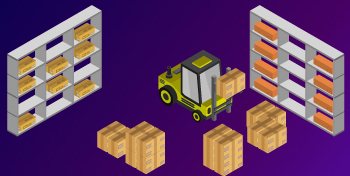Decentralized finance (DeFi) has captured the minds and hearts of the cryptocurrency community in the past few months. DeFi provides a completely new and intuitive platform for automating financial primitives like lending or marketing, without the need for intermediaries.
The era of DeFi and AI symbiosis
The blockchain-centric nature of the DeFi protocols creates an unprecedented knowledge footprint in the capital market. This knowledge can be used by machine intelligence models to better understand and profit from working with DeFi protocols.
Currently, this degree of DeFi intelligence is used mainly as part of third-party goals, resembling bots for arbitrage or profit-making methods. As DeFi evolves, intelligence must shift from third-party software to the core functions of the DeFi protocols.
Simply put, while the current era of DeFi protocols has presented us with unprecedented programming and automation capabilities, the next wave will deal with intelligence as the core functionality. We are on the cusp of a smart DeFi period.
The program consumes the world, and artificial intelligence (AI) consumes the program. Many programs in the world are being rewritten, and the AI is becoming a first-class citizen. Like databases or APIs, AI becomes the basic building block for the purposes of modern software. Enterprise and client goals in many domains have become reasonable in nature, as has the infrastructure they run on. DeFi tends to undergo an identical transformation.
The cornerstone of the first era of profitable DeFi protocols was the automation of monetary primitives, similar to lending or market creation, in the form of programmable interfaces. This degree of programmability and automation has begun to push the boundaries of innovation, creating machines that resemble term loans, automatic market makers (AMM), or network insurance that were not even dreamed of in various capital markets.
The combination of these two actions seems inevitable and could open up a new level of innovation in DeFi.
- Smart AMM
As the name suggests, the current era of AMMS, similar to UniSwap, Balancer, or PancakeSwap, is focused on automation. At a high level, AMM traders have created all sorts of good methods, ranging from dubious advanced mechanisms, to extremely intelligent arbitrages. What if this exploration of innovation can be incorporated into the core AMMS?
Let’s think about a new era of AMMS that change balance sheets, primarily based on oracles, using forecasting techniques to predict the relationship between completely different properties. One of these smart AMMS will train on elements that resemble historical market behaviors in a given set of liquidity pools to figure out how the asset allocation properly reflects current market circumstances. In addition to the many benefits, smart AMMS can help reduce the extreme arbitrage ranges we face in the current AMM era.
- Smart Lending DeFi
Crediting in DeFi protocols is another area where intelligent capabilities are often used as a first-class design block. Products such as term loans have already confirmed DeFi’s chances of allowing lending to fashionable goods that are not suitable for conventional market automation. The current era of credit protocols resembling Maker, Aave, or Compound is for the most part based largely on the collateral fashion, and yet ignores the many different elements that can provide a strong dynamic between the borrower and the lender.
As DeFi lending evolves, we must always rely on the intelligence of the lending protocols to evolve with it. We can simply imagine DeFi lending protocols that can issue not only collateral ranges, but also elements reminiscent of the historical past of liquidation, interaction with various lending protocols, and transaction models to develop a smart and quantitative profile of debtors and creditors. Consider this development as a smart creditworthiness system for DeFi protocols.
- Smart Insurance Coverage
Insurance coverage is becoming a long-standing element of the DeFi ecosystem. Platforms similar to the Nexus Mutual provide a certain degree of stability in DeFi, giving good contracts on completely different platforms. However, the current fashion for insurance coverage is primarily based on the features of specific DeFi platforms, which in the past used little or no artificial intelligence.
In a world where interaction with DeFi protocols is quite obvious, this knowledge can be used to create more intelligent insurance coverage models. Let’s think of a dummy with which the insurance coverage of specific good contracts or addresses depends on a smart trend using quantitative DeFi elements. For example, because of the variety of liquidations in the lending protocols that a good contract was found for, or the types of pools defined by the addresses provided by liquidity. These elements can provide a really well-thought-out profile of specific addresses that may well be included in the decentralized insurance coverage model.
DeFi Intelligence will not be required

Willian Gibson’s famous quote, “The long-term perspective is already here, it’s just not very evenly distributed”, is definitely applicable to the intelligence function in the subsequent era of DeFi protocols. At first, the concept of smart DeFi protocols may seem like a variation of “AI for X” concepts (add your favorite time period: recruitment, accounting, CRM, etc.) that attempts to embed AI into any significant software development available on the market. However, the truth about the financial technology industry in general, and DeFi in particular, paints a very different image.
Intelligence will not be a complex requirement of a key element of the next section of the DeFi protocols. Functionally, DeFi tries to automate and get rid of the main interventions and influences of money companies. At the same time, the rapid evolution of applied sciences that study automation makes these traditional capital markets companies very smart.
Take into account the growing range of machine intelligence demonstrated by robot consultants like Betterment, live managers like Two Sigma, and even brokerage companies like Interactive Brokers. Competing with this degree of intelligence requires more than just automation and programmability. It requires intelligence.
Automation will be fundamental to the growth of DeFi. The most logical next innovation in the space will be the introduction of artificial intelligence (AI).
Considered one of the most disruptive technologies in traditional banking alone, AI can enhance the usefulness of DeFi services by providing the following capabilities:
- Smarter oracles
Oracle services can not only report on the state of the real world (usually the price of asset X), but also make short-term forecasts about it. By studying market patterns, transactions, and fee data sets, Oracle can warn users of an impending period of high volatility that could lead to incomplete builds and liquidations.
- Network fees optimization
The fee for Ethereum has recently reached a level above 400 Gwei, resulting in users paying hundreds of dollars to interact with smart contract tokens. Unwilling to pay such fees, an intelligent AI agent can only execute transactions when it senses a lull in the commission market.
- Maximizing profitability
AI can implement complex strategies that increase profitability and adapt to rapidly changing conditions in DeFi. The reallocation of liquidity can be further automated with more sophisticated approaches applied and modified in real time based on thousands of data points. This will be useful for identifying prices, can reduce volatility, and simplify risk management.
- Limit orders
The ability to set a specific price range in which an order is executed is still the prerogative of centralized exchanges. Smart contracts managed by AI agents can provide this and more complex functionality in automated market makers such as Uniswap and Paraswap.
- User Rating
The banking sector is currently being transformed with the help of artificial intelligence technology, which allows users to profile their risks faster and more effectively. Without compromising user privacy too much, the same technology could be applied in decentralized applications to provide more sophisticated customer layers and more advanced incentive mechanisms. At the very least, the user can access higher returns from their liquidity or other exclusive product / service features.
- Reducing risk
AI-driven derivative products that are exchanged in the blockchain infrastructure are already being studied. The goal is to significantly improve investment products and liquidity in peer-to-peer financial markets. An additional benefit is improved risk reduction.
- Automated hedging
Providing liquidity to volatile crypto assets on decentralized exchanges and in decentralized portfolio management applications sometimes leads to losses. AI can reduce risks by evaluating them and hedging accordingly in other markets.
Summing up

The frenzied evolution of DeFi, together with the massive adoption of applied machine learning sciences, is paving the way for smart DeFi protocols. This new era of derived DeFi protocols does not allow exclusively monetary primitives to be automated in a decentralized manner, but it would be wise to evolve their behavior primarily depending on market conditions and usage.
DeFi is one of the most revolutionary know-how in the fintech model. Machine learning and the applied sciences of artificial intelligence have become a key factor in any simulated software system. The combination of these two actions seems inevitable and could open up a whole new level of innovation in DeFi that will usher in a new era of decentralized and smart financial companies.


